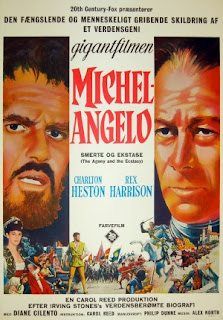2 Nominations, 0 Wins
Nomination: Best Director - Bernardo Bertolucci
Nomination: Best Actor in a Leading Role - Marlon Brando
For someone whose formative decade, both as a person and as a cinephile, was the 1990s, its hard to comprehend just how shocking
Last Tango in Paris was upon its debut at the New York Film Festival in October, 1972 and in its full American release in early 1973. The film's frank and graphic depiction of the combination of sexuality and violence notoriously shocked audiences, and audiences were getting into the habit of being shocked by sexuality in film, with
Last Tango in Paris coming only months after the release of
Deep Throat (1972). But unlike
Deep Throat, which was a silly adult film starring a then unknown Linda Lovelace and directed by a still unknown Jerry Gerard,
Last Tango in Paris was directed by the up-and-coming auteur Bernardo Bertolucci and, most significantly, starred Marlon Brando, one of the biggest stars in film history coming off of one of the greatest roles in film history, that of Don Vito Corleone in
The Godfather. To see the face of Terry Malloy, Stanley Kowalski, Johnny Strabler, Fletcher Christian, and Don Corleone committing acts of previously unfilmable sexual violence must have been an experience like no other, and I have no difficulty in understanding why this film was so passionately received.
Unfortunately, this context does not exist 40 years later, and the film is forced to stand on its own merits, divorced from the time in which it was made. While it is a bit much to say that the emperor has no clothes, he is, at most, scantily clad.
The film's two leads, Paul (Brando) and Jeanne (Maria Schneider) are largely anonymous to each other, not exchanging names or their personal histories, and it is this anonymity that drives their relationship, especially on Jeanne's end. In contrast to her boyfriend Tom (Jean-Pierre Leaud), a filmmaker directing a film about Jeanne that chronicles her life so closely that she is left with absolutely no anonymity, her attraction Paul burns until their anonymity is shattered. This is a rich premise, and by avoiding the easy exposition of most films in which characters explain themselves to each other, screenwriters Bertolucci and Franco Arcalli can reveal the characters to each other, and the audience, more artfully through what goes unsaid between the two. Where the screenplay falls short, however, is that there is very little revealed either directly or indirectly through the scenes Paul and Jeanne share, and instead the majority of the character development comes in the scenes in which the characters spend apart. These revelations of character are far less artful, at times becoming downright clunky.
These moments are indicative of the film's greatness weakness, its heavy-handedness. Despite its moments of subtly, Bertolucci doesn't trust his audience enough to leave anything subtle for long, instead pounding home every point. The theme, composed by Gato Barbieri, is lush and haunting, but is used far too melodramatically, driving the scenes instead of accentuating them. Brando, rarely content to be subtle, only accentuates this problem. Though he is actually restrained by his own standards, he pounces on every chance to announce the themes of the film as loudly as possible.
The discussion of Maria Schneider's contribution to the film largely focuses on the scenes of sexual depravity, but she deserves to be acknowledged for an impressive contribution. Still a teenager during the film's shooting, Schneider faced the dual challenge of holding her own against one of the greatest (and most difficult) actors in film while being directed by Bertolucci, who she never forgave for her poor treatment on the set. Despite all of this, she is outstanding in the film, and though her performance isn't nuanced in the way of Brando's, she exudes a sense of effortlessness that can only come from great effort.
Though the film has much going for it, at its conclusion I was left thinking "Is that all there is?" I expected to have a passionate reaction to the film, either positive or negative, and instead I was left surprised only by my indifference. It seems that the greatness of
Last Tango in Paris came from its groundbreaking nature, and now he ground has not only been broken but dug so deeply that there isn't much left for the film to stand on.
Remaining: 3128 films, 857 Oscars, 5351 nominations




